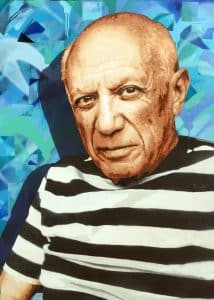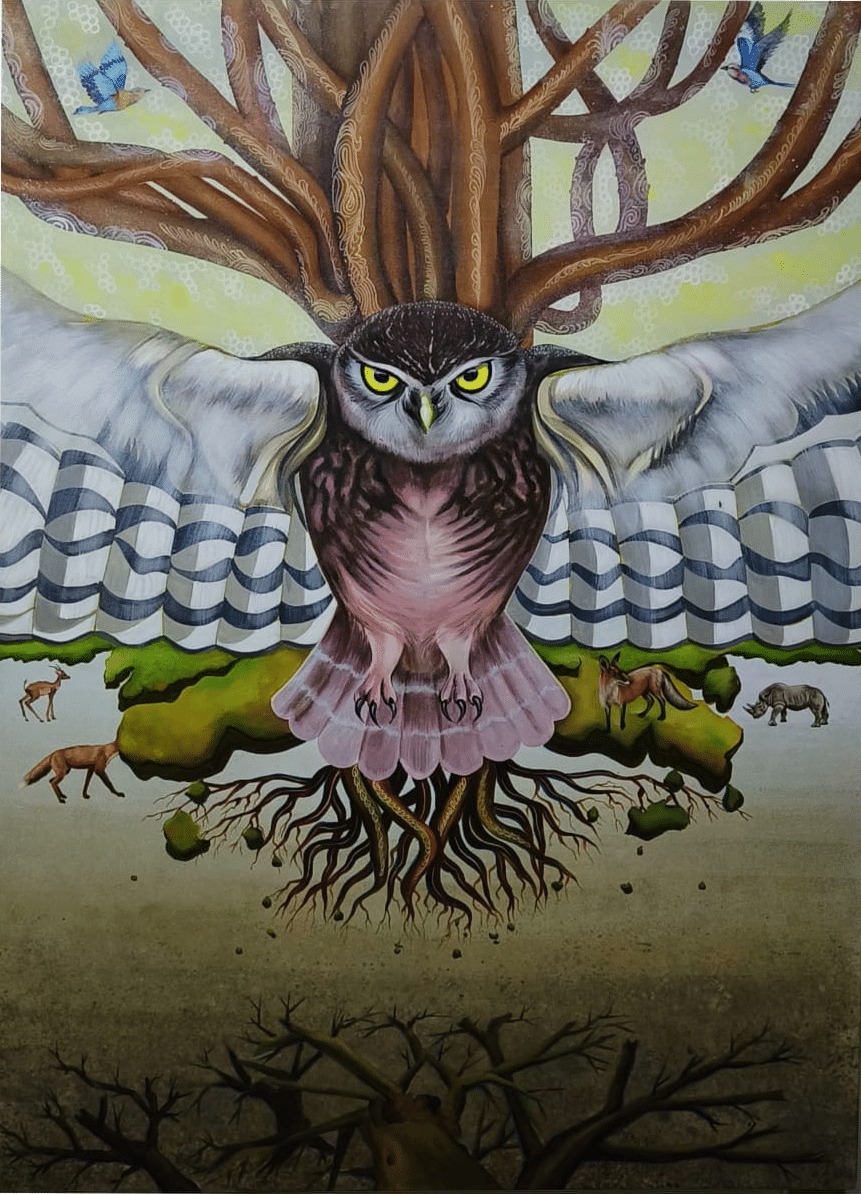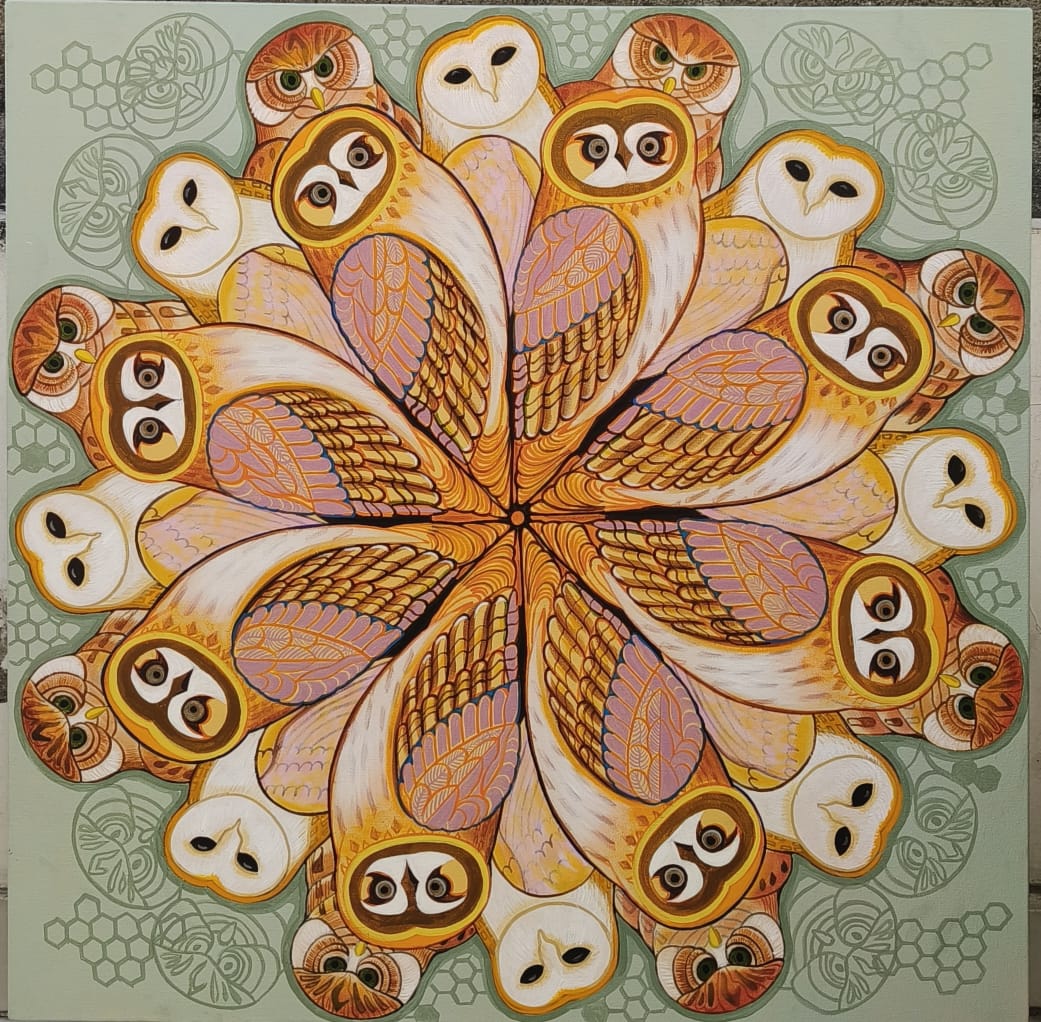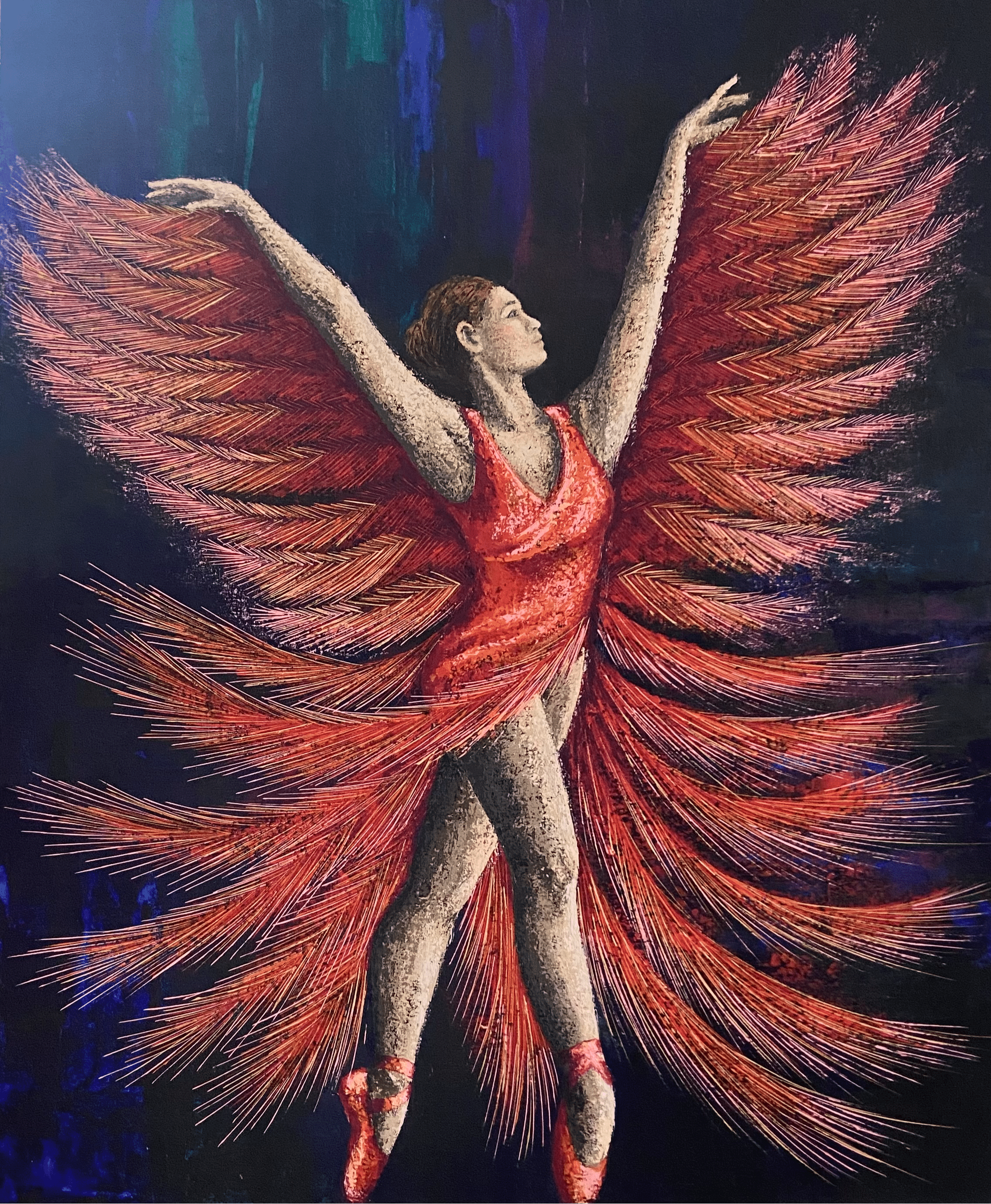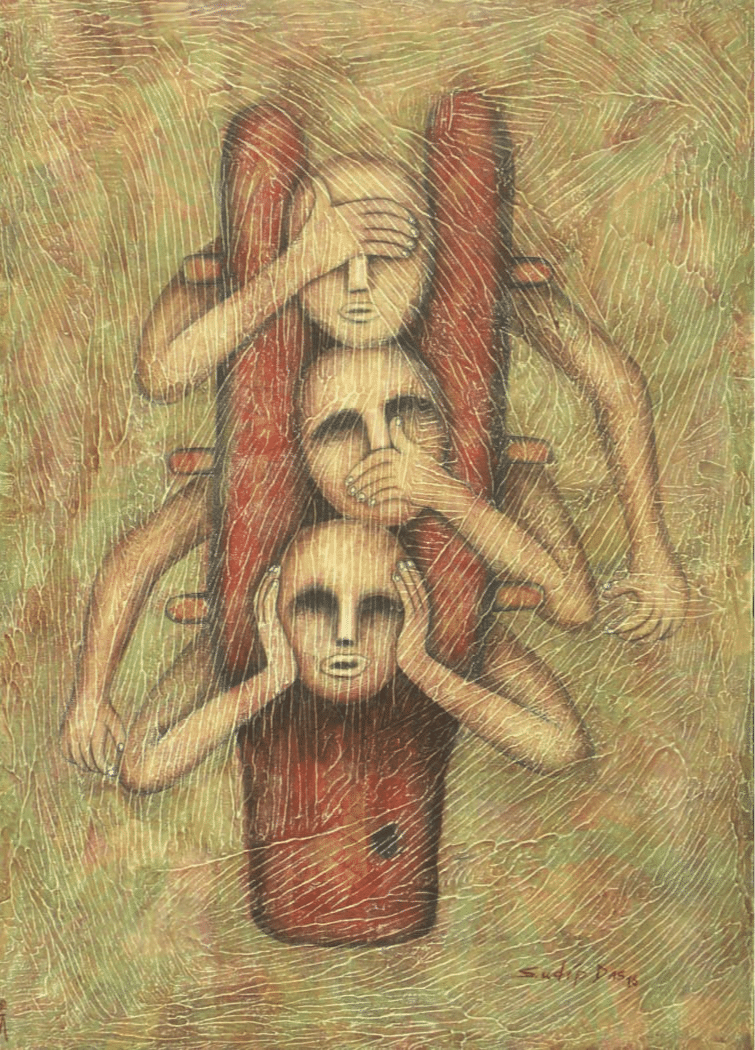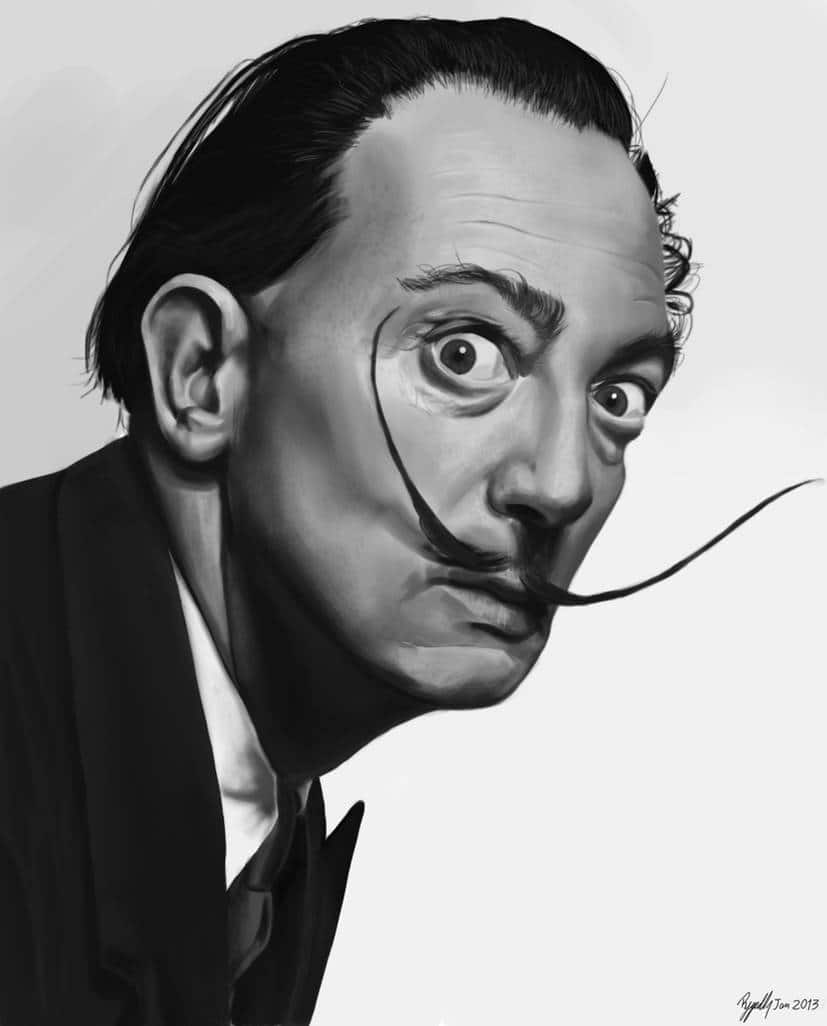
Salvador Dalí, A master of imagination known for his bold and dreamlike artworks that changed modern art forever.
The iconic 20th-century artist Salvador Dali remains among the most celebrated Spanish painters globally. He is renowned for his surrealist masterpieces, such as The Persistence of Memory (1931), featuring the iconic melting clocks painting. Besides his flamboyant persona, Dali remains a chief and leading figure in surrealist art. Alongside being a versatile and prolific artist, Dali’s work transcends art, blending psychology, philosophy, and mysticism.
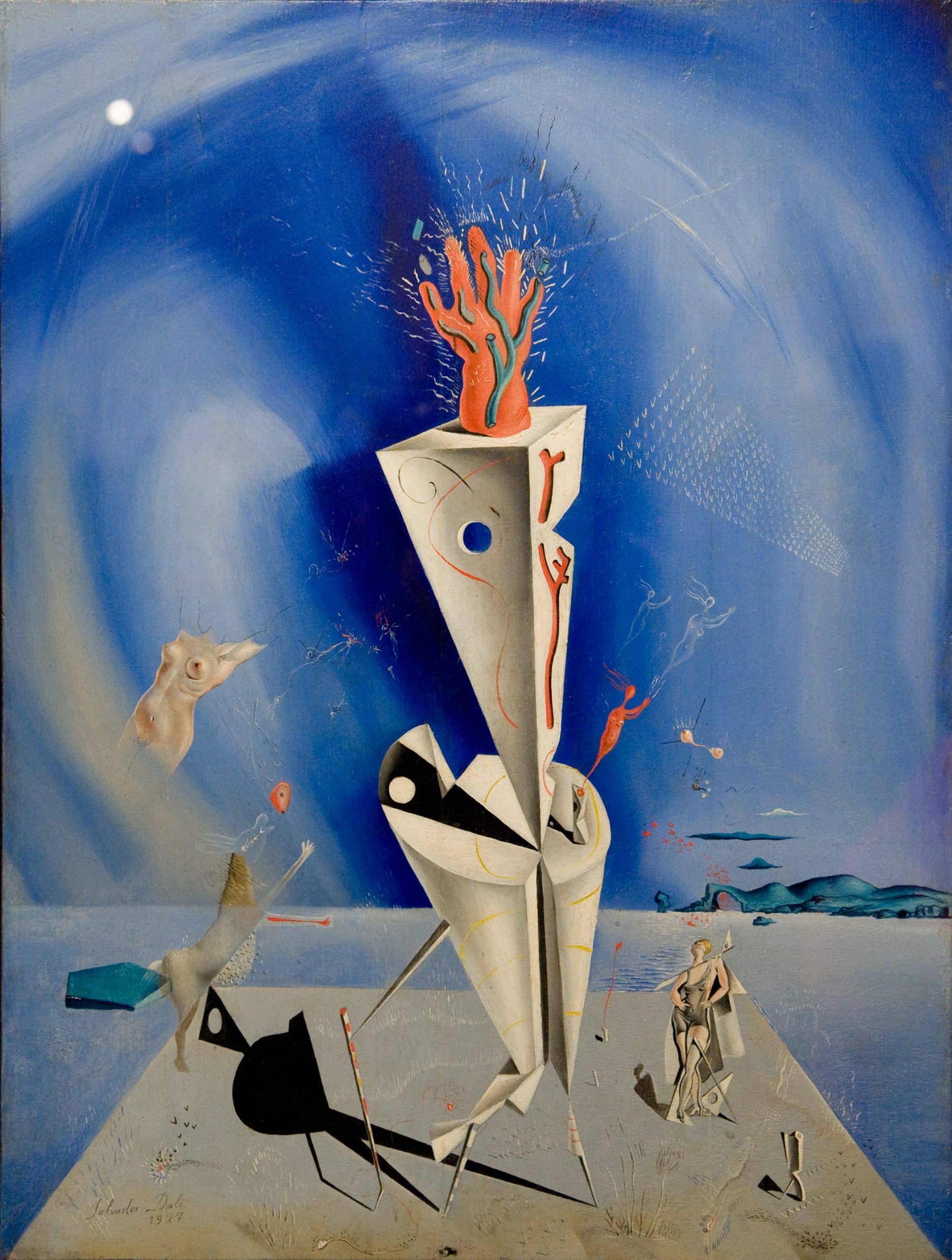
“Apparatus and Hand” (1927): Dalí’s early work showing his interest in dreams, machines, and hidden thoughts.
Introduction to Salvador Dali: The Icon of Surrealism
Salvador Dali was born in Figueres, Catalonia, Spain. He had his first drawing lessons at age 10, during which his early interest in art was profoundly nurtured and supported by his parents. Influenced by Impressionism and the Renaissance masters from a young age, Dali became increasingly attracted to Cubism and avant-garde movements. He received his formal education in fine arts by enrolling in the Madrid School of Fine Arts, where he experimented with Impressionist and Pointillist styles. Later, when he turned 19, his father hosted a solo exhibition of his technically exquisite charcoal drawings in their family home.
Dali joined the Municipal Drawing School in Figueres in 1916, where he became acquainted with the avant-garde through the Catalan Impressionist Ramon Pichot. He also discovered modern painting on a summer vacation trip to Cadaqués with Pichot’s family. Pichot also introduced Dalí to the work of Picasso and the Futurists, both of which would influence Dalí’s oeuvre even as it maintained a strong attachment to realism.
Surrealism influenced Dali in 1927. Dalí’s first Surrealist painting, “Apparatus and Hand” (1927), depicts a bizarre figure comprising an elongated pyramid precariously perched atop another geometric solid with needle-thin legs; it stands on a barren plain beneath a turbulent vortex of clouds and sky lofting objects (a nude female torso, a flock of birds) into the air. Dalí maintained that this vision sprang from the deepest recesses of his subconscious.
Dali described two of his works, “Honey is Sweeter than Blood” (1927) and “Gadget and Hand” (1927), as “equidistant between Cubism and Surrealism,” which were shown at the annual Autumn Salon in Barcelona in October 1927 and later joined a Surrealist group in 1929. In August 1931, he completed one of his best-known artworks, “The Persistence of Memory,” turning him into a sensation in the United States before his first visit to the country when an art dealer, Julien Levy, organised a well-received exhibition in New York in 1934 of Dalí’s artwork. This exhibition also earned him his commercial success. He developed his “nuclear mysticism” style based on his interest in classicism, mysticism, and recent scientific developments after announcing his return to the Catholic faith by returning to Spain in 1948.
Dali was often told to be an incarnation of his dead brother by his parents as he was his namesake, which planted ideas in Dali’s mind that later reappeared the images of his brother in his works, which include the “Portrait of My Dead Brother” (1963).

Explore the enigmatic world of Salvador Dalí, where imagination transcends reality.
Dali’s Dreams and the Subconscious
Sigmund Freud’s writings greatly influenced Dali on the erotic significance of subconscious imagery and his association with the Paris Surrealists, a group of artists and writers, sought to establish the “greater reality” of the human subconscious over reason, developed his mature artistic style. To bring up images from his subconscious mind, Dalí began to induce hallucinatory states in himself by a process he described as “paranoiac critical”. The “paranoiac-critical-method” is a Surrealist technique developed by Dalí in the early 1930s. He used it in creating paintings and other artworks, particularly those featuring optical illusions and multiple images. The technique involves the artist inducing a paranoid state, characterised by the fear of being manipulated, targeted, or controlled, which leads to a psychological deconstruction of identity. As a result, subjectivity becomes the central focus of the artwork.
From 1929 to 1937, he produced mature paintings, making him the best-known Surrealist artist. He depicted a dream world in which commonplace objects are juxtaposed, deformed, or otherwise metamorphosed bizarrely and irrationally. Dali portrayed those objects in meticulous, almost painfully realistic detail and usually placed them within bleak sunlit landscapes reminiscent of his Catalonian homeland.
Dali and Buñuel’s Surrealist Cinema Revolution
Dali collaborated with the Spanish film director Luis Buñuel on two short films, “Un Chien Andalou” (An Andalusian Dog) 1929 and “L’Âge d’Or” (The Golden Age) 1930, which were filled with grotesque but highly suggestive images. He wrote the screenplay for both films. Later, during the presentation of the first film, Dalí met French poet Paul Éluard, one of the founders of Surrealism, and his wife, Gala, whom he later married.
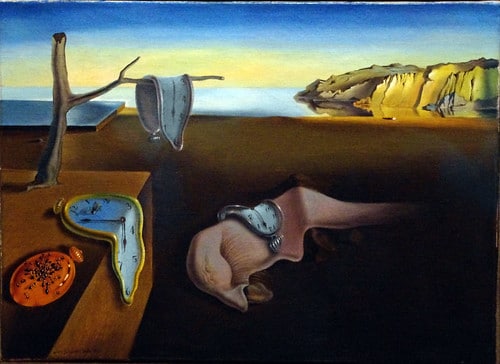
“The Persistence of Memory” (1931): Dalí’s famous painting of melting clocks that explores how we see time and memory.
The Birth of Iconic Surrealism and Later Career
Dalí’s famous painting “The Persistence of Memory,” with its melting clocks, became Surrealism’s defining image, symbolising time’s fluidity and existential dread.
Dali was asked by the famous director Alfred Hitchcock to create the dream sequence of his thriller ‘Spellbound’ in 1945. Also, Disney cooperated with Dalí to make the animated cartoon ‘Destino’, but the project was suspended due to financial difficulties following WWII and not completed until much later (2003).
Under the influence of the Renaissance painter Raphael, Dali switched to painting in a more academic style in the late 1930s. His ambivalent political views during the rise of fascism alienated his Surrealist colleagues, which resulted in his expulsion from the group. Dali spent much of his time designing theatre sets, interiors of fashionable shops, and jewellery, exhibiting his genius for flamboyant self-promotional stunts in the US from 1940 to 1955.

“The Sacrament of the Last Supper” (1955): A powerful mix of faith and imagination, painted during Dalí’s later years.
Religious Theme and Science
Dali painted many works on religious themes, continuing his exploration of erotic subjects to represent childhood memories and using themes centering on his wife, Gala. Despite their technical accomplishments, those later paintings are not regarded as highly as Dali’s earlier works.
Between 1940s and 1950s, Dali’s paintings focused primarily on religious themes, reflecting his interest in the supernatural. As he famously claimed, “I am a carnivorous fish swimming in two waters, the cold water of art and the hot water of science.” He aimed to portray space as a subjective reality, which may be why many of his paintings from this period show objects and figures at extremely foreshortened angles. He continued employing his “paranoiac-critical” method, which entailed working long, arduous hours in the studio and expressing his dreams directly on canvas in manic bouts of energy.
Dalí merged scientific concepts with religious iconography, as seen in “The Sacrament of the Last Supper“ (1955). The artwork is characterised by his increased interest in science, optical illusion and religion. During this time, he became a devout Roman Catholic and was astonished by the “atomic age.” Dalí himself labelled this era in his work “Nuclear Mysticism”. He sought to combine traditional Christian iconography with images of disintegration.
Dali’s influence and legacy
Although Dali’s works are housed in some of the world’s most renowned art museums and galleries, including The Museum of Modern Art (MoMA) in New York and the National Gallery of Art in Washington, D.C. There are two major museums that are dedicated exclusively to his work. The Dalí Theatre-Museum in his hometown of Figueres, Catalonia, Spain, opened in 1974, features a collection of his art. The Salvador Dalí Museum in St. Petersburg, Florida, U.S., was founded in 1982 by collectors A. Reynolds and Eleanor Morse.
Dali’s life and work have influenced pop art, other Surrealists, and contemporary artists such as Jeff Koons and Damien Hirst. Additionally, the popular Spanish television series Money Heist (2017–2021) features characters wearing red jumpsuits and Dali masks. The series’ creator stated that the Dali mask was chosen for its status as an iconic Spanish symbol.
Dalí Today: Exhibitions and Immortality
“Dalí Comes to India,” an exhibition held at Visual Arts Gallery, Delhi, India, opened on 7 February 2025 and showcases 200 works, including original sketches, etchings, and watercolour paintings. The exhibition is curated by Dali’s collaborator, publisher, collector, and lifelong friend, Christine Argillet. Dali’s “Mythologie” and “Les Chants de Maldoror” are also on display in the exhibition.
By merging the allure of historic exhibitions like “Dalí Comes to India” with the innovative approach of Elisium Art, collectors can experience a dynamic art journey. Whether you’re drawn to the timeless masterpieces of established legends or the fresh perspectives of emerging talent, Elisium Art offers unparalleled opportunities to enrich your collection with unique and authentic artworks. It serves as a bridge between the traditional art world and modern collectors, ensuring that exceptional talent does not go unnoticed.

Written by
Sanjana Dhar
Sanjana Dhar is a passionate storyteller and art enthusiast who brings a unique blend of creativity and marketing expertise to the Elisium Art team. Hailing from Kolkata, a city steeped in artistic heritage, she developed a deep appreciation for contemporary art and its ability to transcend cultural boundaries. With a background in media studies and a passion for exploring the vibrant world of Indian and international art, she crafts compelling narratives that connect audiences with the transformative power of art. Her experience in branding, social media, and content strategy allows her to effectively communicate the essence of artistic expression, unraveling the stories behind each masterpiece and spotlighting the diverse voices shaping the contemporary art world.



